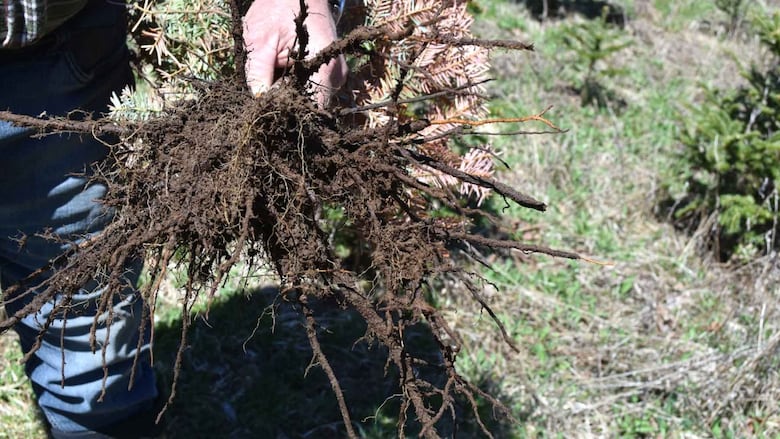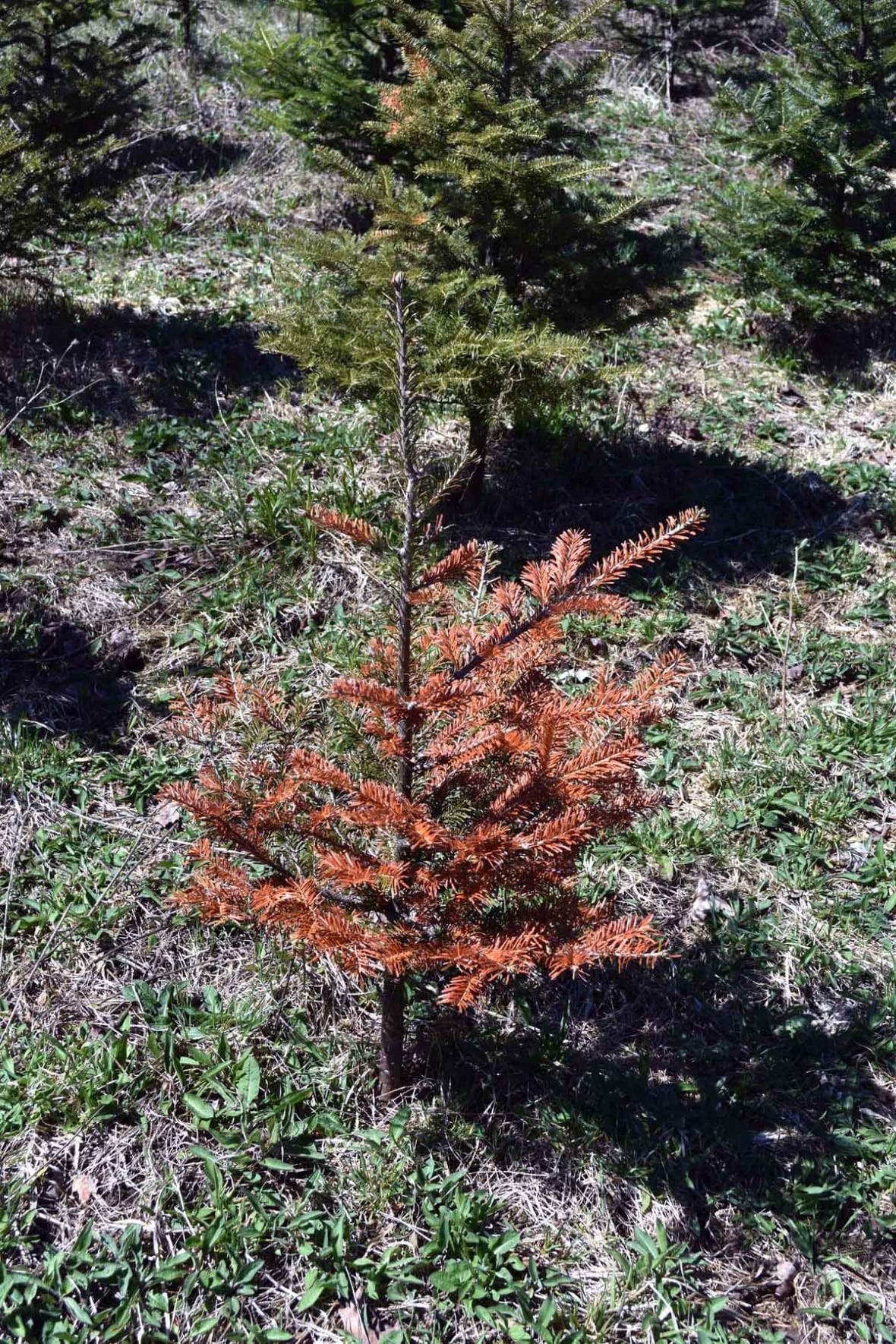Christmas tree growers keep watchful eye on spread of dangerous mould
Phytophthora abietivora is causing root rot primarily in Fraser and balsam fir trees

Christmas tree growers in Atlantic Canada are monitoring the spread of a disease and looking for ways to combat it.
Phytophthora abietivora, a destructive form of mould first identified in 2017 — although it has probably been around undetected for much longer — is causing root rot primarily in Fraser and balsam fir trees.
Matthew Wright, treasurer of the Christmas Trees Atlantic Association and a crop protection expert, said imported seedlings may have brought the disease into Nova Scotia and New Brunswick, where localized outbreaks have occurred.
"It's not anything to be casual about," he said.
The disease is spread through soil, water, infected plant material and contaminated equipment.

According to the Canadian Food Inspection Agency, the disease spread from the northeastern U.S. to Quebec and Ontario.
In Quebec, it was reported in forest nurseries and Christmas tree plantations where it caused root rot.
In Ontario, it has been found in samples from forested areas but is not associated with any disease.
Wright said the disease is a slime mould and belongs to an ancient group of organisms between algae and fungi.
"They have swimming spores that move through moist soil to infect new trees," he said. "That's why drainage is one of the real keys to managing it."
The mould produces thick-walled spores that can survive in soil for decades, meaning that once it is in a field it is almost impossible to eliminate.

Wright said a warming climate in the region may be worsening the problem.
Frozen soils had frosts that went deep enough to kill off most mould species, Wright said. But with milder winters, the frost isn't penetrating as deeply, and the mould is surviving.
He said growers can reduce the chance of losses by improving drainage and planting on raised beds.
Wright said if the disease spreads to natural stands of trees the consequences could be devastating.
Infected trees should be removed and burned to prevent further contamination.
Research efforts
Wright said researchers are exploring ways to fight the disease.
In North Carolina, he said scientists are grafting Fraser fir onto momi fir rootstock, an Asian species that has developed "bulletproof" resistance to the mould.
Wright said Canadian researchers, led by a team in Quebec, are using DNA sequencing to track the pathogen's spread and test potential biological controls.
MORE TOP STORIES

